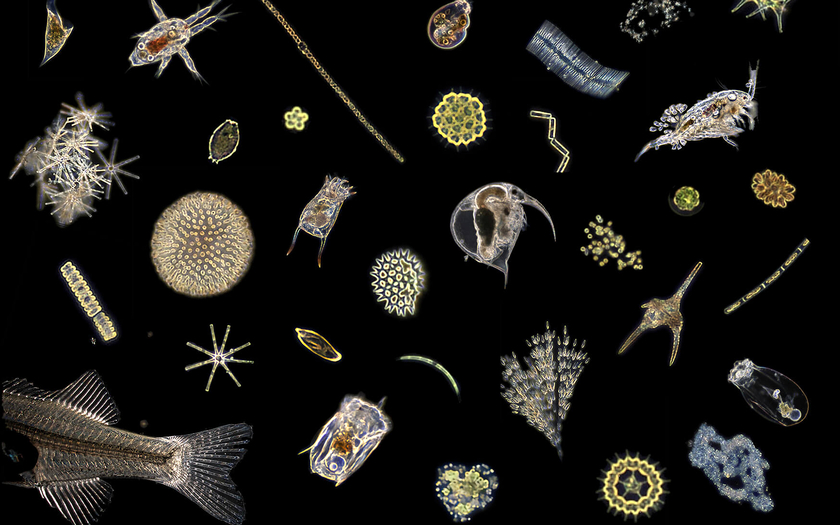Archive detail
Underwater camera explores microcosms in Lake Zug
June 5, 2024 |
Plankton is an indicator of the health status of water bodies. Plankton are animal and plant organisms such as tiny crustaceans and small algae that float in the water and do not move or only move very slightly in the water. They are an important source of food for the larger animal species in the water. If the population or composition of the plankton changes, this can have a major impact on the lake ecosystem and thus also on the fish stocks. In Lake Zug, the catch figures for whitefish in particular fluctuate greatly - the bread-and-butter fish of professional fishermen. The concentration of blue-green algae, such as the Burgundy blood algae (planktothrix rubescens), also changes over the course of the year. This affects the water quality and can have an impact on the utilisation of the lake.
Automated and adaptive evaluation of plankton data
A special underwater camera has been installed in Lake Zug so that information on plankton can be analysed and interpreted in future. The Aquascope takes images of free-floating particles in the water at regular intervals. The data is then transmitted to a computer in real time, automatically analysed and evaluated. Machine learning is helping to make the algorithms used in this process increasingly precise. The new measuring method can provide important information about the microorganisms in Lake Zug. “By regularly monitoring the plankton, we can better recognise changes in Lake Zug and respond to them more quickly. Analysing plankton data used to be very complex and time-consuming. The automated analysis speeds up the process enormously and increases the significance of the results,” says Martin Ziegler, Head of the Cantonal Office for Forests and Wildlife.
The Aquascope was installed in close cooperation with the Aquatic Research Institute Eawag. The scientists have adapted the method developed by the US Monterey Bay Aquarium Research Institute for Switzerland and have tested it in Lake Greifen in the canton of Zurich. They therefore have many years of experience in measuring and analysing plankton data. The responsible leader from Eawag, Franceso Pomati, explains: “We are dealing with highly complex dynamics in the plankton networks in lakes. We are trying to understand these more precisely in order to make predictions in the future. The Aquascope allows us to observe development in real time, but also to compare the trends from different years.”

Technology offers further possibilities
The Aquascope in Lake Zug is the second permanent measuring station for plankton data in Swiss water bodies after Lake Greifen. In order to obtain high-quality data, the Office for Forests and Wildlife evaluated various locations in Lake Zug for the installation of the Aquascope. These had both advantages and disadvantages. An installation in the harbour would be more accessible. However, the image quality is poorer due to boat traffic and a higher proportion of dirt particles in the water. Eawag’s experience has shown that the best results can be expected when the Aquascope is installed in the open water zone and the device is surrounded by open water within a radius of 15-20 metres. The Aquascope is now located about 30 metres from the Walchwil hatchery and floats in the lake with the help of a special buoy designed and built by Chavanne Boatyard in Malters. The location is equipped in such a way that further technical devices could be installed to collect other data. A measuring chain for collecting data on the oxygen content and water temperature of Lake Zug has already been planned. A sonar device for fish monitoring could also be installed.
Aquascope of Lake Greifen
About the Office for Forests and Wildlife
The Office for Forests and Wildlife (AFW) is responsible for the protection and sustainable use of forests as well as aquatic and wildlife habitats. Another core task is natural hazard management in the Canton of Zug.
Cover picture: The Aquascope is anchored to its buoy in Lake Zug (Photo: Eawag).



